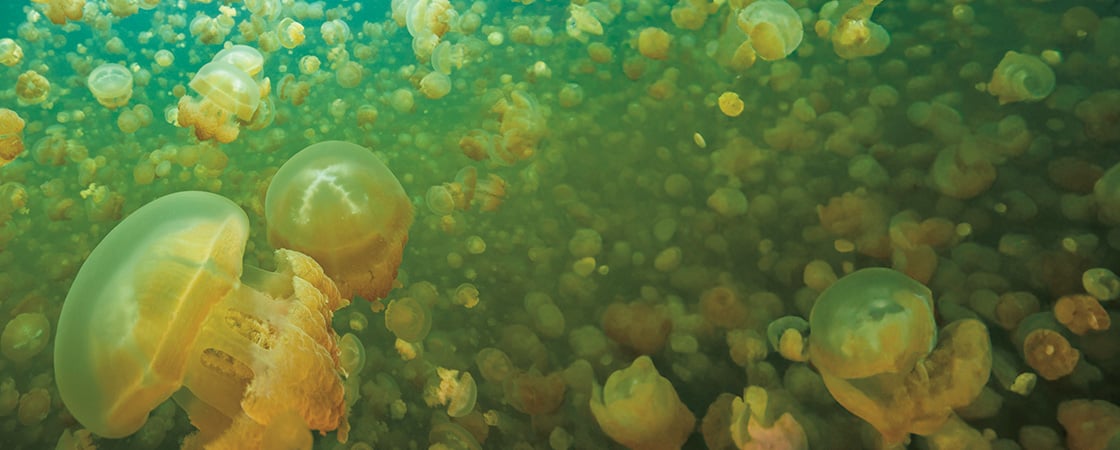Frightful creatures are taking over our oceans. They are gobbling up fish, terrorizing swimmers, and committing terrible acts of destruction.
In the Philippines, they swarmed a power plant and caused a blackout that plunged 40 million people into darkness. In Australia, they shut down a giant U.S. Navy ship. Off the coast of Ireland, they invaded a fish farm and killed more than 100,000 salmon.
But if you’re picturing fierce serpents with razor-sharp teeth or giant squid dragging ships to the ocean floor, try again.
The creatures menacing our oceans are the beautiful, brainless blobs known as jellyfish.
Scary creatures are taking over our oceans. They are gobbling up fish. They are terrorizing swimmers. They are destroying things.
In the Philippines, they swarmed a power plant. That caused a blackout. Forty million people were left in darkness. In Australia, they shut down a U.S. Navy ship. Off the coast of Ireland, they invaded a fish farm. They killed more than 100,000 salmon.
Are you picturing a giant squid or fierce serpents with razor-sharp teeth? Try again.
The creatures menacing our oceans are the beautiful blobs known as jellyfish.



